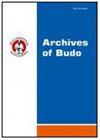Trend of the effects of four varieties of yoga bhastrika pranayama on physical efficiency index
IF 1.5
3区 医学
Q3 SPORT SCIENCES
引用次数: 4
Abstract
Background The objective of the study was to find out the Trend of the effects of four varieties of dynamic yogic breathing call as Bhastrika Pranayama on physical efficiency measured by Harward Step Test. The study was design to find out significant difference between measures of performance (Physical Efficiency Index) for four treatments (four verities of Bhastrika pranayama). Also to find out interaction between particular trials and treatments (linear, quadratic & cubic component for overall trend). Material/Methods: Total of 40 students were selected as subjects. Age of the Subjects was ranged from 17 to 25 years. All the subjects were divided randomly in to four groups i.e. 10 in each group. Practice of Bhastrika Pranayama was considered as Independent variables and Physical Efficiency Index was considered as dependent variables. To find out the trend of the effects of four varieties of Bhastrika Pranayama on Physical Efficiency Index, trend analysis with multiple treatments was used at 0.05 level of Significance. Results: Insignificant difference was found between measures of performance for treatments (significant trend for treatments), between trials and treatments interaction and between cubic component for overall trends (all p>0.05). Significant difference (p<0.05) was found between measures of performance for treatments (significant trend for trials), also between linear component for overall trends (p<0.05) and between quadratic component for overall trends. Conclusions: Study revealed that all the four varieties of Bhastrika Pranayama practices proved to be equal in bringing out change in Physical Efficiency Index.四种瑜伽下调息法对身体效率指数的影响趋势
本研究的目的是探讨四种动态瑜伽呼吸法(称为Bhastrika Pranayama)对身体效率的影响趋势。本研究旨在找出四种治疗方法(四种Bhastrika调息法)的表现指标(身体效率指数)之间的显著差异。还可以找出特定试验和处理之间的相互作用(总体趋势的线性,二次和三次分量)。材料/方法:选取40名学生作为研究对象。受试者年龄在17 - 25岁之间。所有受试者随机分为四组,每组10人。以分体式呼吸法的练习为自变量,以身体效率指数为因变量。为了解4个巴氏调息品种对体质效率指数的影响趋势,采用多处理趋势分析,差异均为0.05。结果:治疗效果测量之间(治疗显著趋势),试验和治疗相互作用之间以及总体趋势的立方分量之间的差异不显著(均p < 0.05)。在治疗效果测量之间(试验的显著趋势),总体趋势的线性分量之间(p<0.05)和总体趋势的二次分量之间存在显著差异(p<0.05)。结论:研究表明,所有四种Bhastrika调息法练习在带来身体效率指数的变化方面是相同的。
本文章由计算机程序翻译,如有差异,请以英文原文为准。
求助全文
约1分钟内获得全文
求助全文
来源期刊

Archives of Budo
SPORT SCIENCES-
CiteScore
2.80
自引率
47.60%
发文量
0
审稿时长
>12 weeks
期刊介绍:
Archives of Budo is an international peer reviewed journal publishing articles on various aspects of the sports sciences covering education and research in martial arts and combat sports, and related areas like biomechanics, kinesiology, medicine, psychology, sociology, technologies of sports equipment, research in training, selection, performance, survival, and other interdisciplinary perspectives.
Archives of Budo editors endorse the principles embodied in the Helsinki Declaration and expect that all research involving humans has been performed in accordance with these principles. All human studies must have been approved by the investigator''s Institutional Review Board. A copy of the relevant documentation should be included with the manuscript. Furthermore Archives of Budo follows the ICMJE''s Recommendations for the Conduct, Reporting, Editing and Publication of Scholarly Work in Medical Journals.
Archives of Budo provides free, immediate and permanent online access to the full text of all articles distributed under the terms of the Creative Commons Attribution Non-commercial License http://creativecommons.org/licenses/by-nc/4.0), which permits use, distribution, and reproduction in any medium, provided the original work is properly cited, the use is non-commercial and is otherwise in compliance with the license.
 求助内容:
求助内容: 应助结果提醒方式:
应助结果提醒方式:


